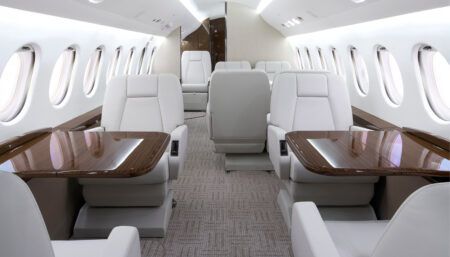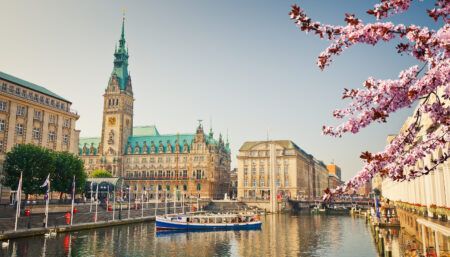Robin Dunlop, founding partner at Altea, and founder of CTM Design, discusses industry trends ahead of EBACE 2022
What aesthetic trends have you noticed lately?
We did a fair bit of research on this topic throughout the last year, culminating in our Global 7500 concept. We think simple lines and fresh material visages are the order of the day. While detailing is eye-catching and relevant, it needs to be simply integrated and not lost in a melee of opulence and cultural influence. Natural hues are timeless and appealing, but should be punctuated with bold colour, steely greys, eye-popping yellows and oranges, and sumptuous rich bottle greens and deep navy blues. If these are articulated within a natural palette then they are not only relevant and inviting, but timeless. You only have to look at Scandi design history, or even what the likes of Polestar cars are doing, to see an interpretation of this timeless approach.
What material innovations have caught your eye?
A few companies are working on integrating natural materials into composites, making assemblies more lightweight, attractive and sustainable.
Is the pandemic impacting customer requests?
I think in light of recent weeks and the situation in Europe, the pandemic will be quickly forgotten. It has influenced the acquisition market, with pre-owned aircraft inventory down to a record low and demand ramping up. This is seen mainly in the mid-to-heavy business jet market, but also we can see the A220 carving out its own marketplace. Customers seem more aware of air filtration system capabilities now, in terms of capturing airborne pollutants. There’s also a greater awareness of whether a decor material can be suitably cleaned and kept hygienic. Above all though, we have new aircraft owners coming into the market, which is good, driven by the desire to fly safely and in style.
What IFE technologies are trending? Will the metaverse take off in business aviation?
Many design concepts lately have integrated the aircraft’s surroundings in flight into the cabin – from LED screens forming part of shaped wall and ceiling architecture, to panoramic windows and even a fuselage ‘window bubble’. None have been implemented thus far, simply because the cost of engineering, integration and certification is overwhelming, even for billionaires. Whether an immersive digital technology would be preferable and less of a challenge – due to its, in theory, reduced hardware and integration – will be interesting to follow and even tap into. Business aircraft owners might be pessimistic about such technologies since getting consistently good connectivity can still be a challenge.
Will the popularity of NFTs impact the industry?
We haven’t had any requests or direct reference to NFTs. Displaying wealth is becoming increasingly unpopular, and I suspect that the typical private aircraft owner/beneficiary is not interested in NFTs, yet. If NFTs should become more popular with owners, will they wish to display them on board? It may well be so, as physical art forms are not so easy to install and require some expertise – our colleagues at Art n Jet specialise in this.
What other trends are in play?
Simplicity of function and thus form is more evident. Globalisation will reduce in pace, and thus exposure to and desire for certain trends will be simplified.
What are your hopes for EBACE?
I will be at EBACE with my Altea colleagues. Our hope is that we can have some certainty on the market and future projects given the last two years and now current affairs in Eastern Europe.
This interview was first published in the March/April 2022 edition of Business Jet Interiors International.





